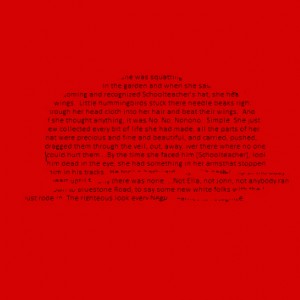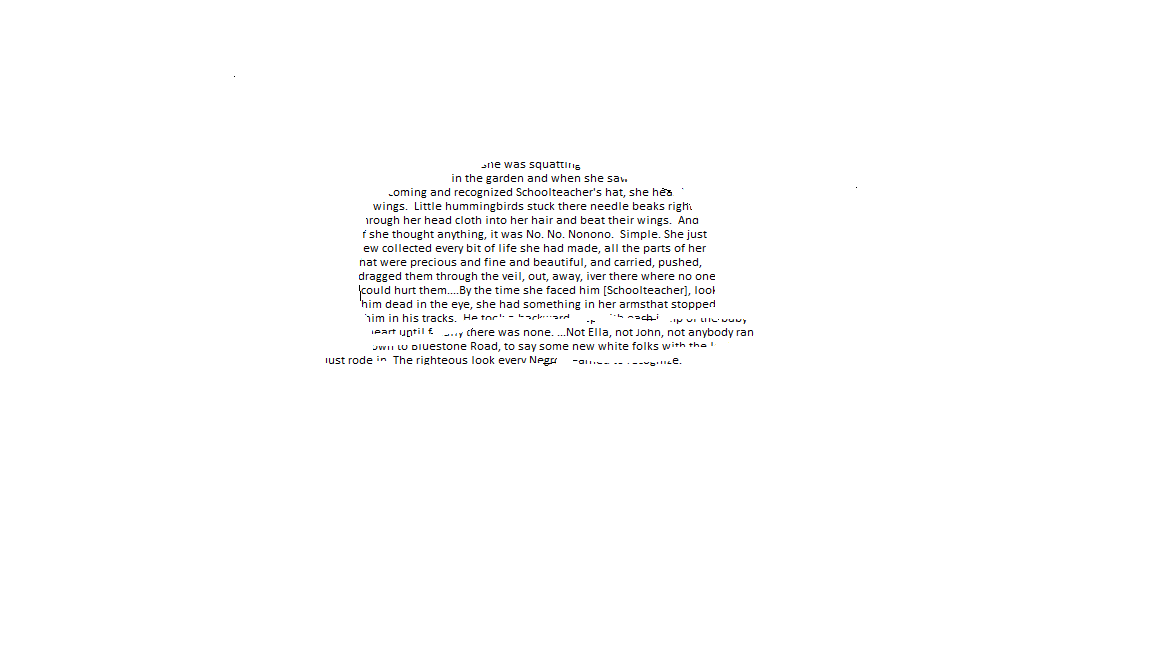“The Yellow Wallpaper” Johns Pov
The dream is finally coming together. The beautiful wife, the darling baby, and now we are finally able to afford the renovations that we’ve been speaking about. Sure it’s expensive, and we’ll have to be away for the entire summer, but it couldn’t have worked out better. I found a nice rental home for the full three months, and got a job nearby in the clinic.
Besides, ever since the baby has come along, Jane seems a little on edge, and perhaps a little depressed. This little “vacation” will give her a chance to clear her head, and get a little fresh air. In fact the cleaner air will be beneficial to both her and the baby, such fragile things.
We finally arrive at the house, and it really is perfect. It is set back from the road and is on quite a large property. It has the most beautiful gardens, Jane and the baby can spend hours out there in the wonderful summer air. Jane immediately says the house is haunted, but I know that is just her depression talking. It was sitting empty for a couple of years but that just led to the price being reduced, not to having ghosts in the attic.
We finally got settled. We chose the room on the topmost floor. It has lots of windows, providing plenty of fresh air and sunshine, practically the cure for her symptoms of depression! At first she wanted a room on the ground floor, but I talked her out of that in a hurry. Although she did make a good point about the wallpaper, it really is ugly. Maybe I’ll get around to repapering the room this summer.
Jane has been complaining about her “illness” as of late. What a silly girl, “illness” this is a mild case of depression brought on by the stress of giving birth. I have seen it before and will no doubt see it again. How lucky is she to have a physician as a husband?! With fresh air and lots of rest she will be back to her good old self in no time. She wants to write, and talks about visiting her cousins, but that must wait, rest is what she needs now.
The work at the clinic is really interesting, and challenging. It’s really a shame I have to spend so much time there, and sometimes even late into the night. I’m just glad that Jane is on the mend, this wonderful air is really doing her well. She does have some trouble sleeping some nights, but it’s just her nerves. It’ll pass soon.
My, how Jane can go on about the wallpaper. She speaks of its crazy patterns, angles, and curves, and how it makes her nervous. I would love to repaper it, but we are so very busy at the clinic these days. Besides, to repaper it would be giving in to her wild imaginations and make her fantasies more real. It’s really a great room, all but the wallpaper, but it’s not like we live here. Only for a couple more months. I’m sure she understands that.
Again, Jane speaks about visiting with her cousins, and again how I tell her she needs more time to rest. Her cousins Henry and Julia are very excitable folks and that is too much for her right now. I’m also having suspicions that she might be writing. It’s a good thing my sister was able to come out and help around the house. I’ll be telling her to keep an eye out for Jane’s notebook. Jane needs her rest, we are so lucky to have found such a great house for her to recuperate.
After the fourth of July, Jane’s mother, and sister spent some time here along with her sister’s kids, I thought the company would do her good, but she seems very tired out. If she’s still not 100% by the time we go back home, I’ll take her to see Doctor Weir Mitchell. He has been known to treat hysteria very effectively. But in the meantime I’m very glad Janie was able to stay, and help us out this summer. Jane has to focus on getting healthy, not on housework, and caring for the baby.
What a busy summer this is turning out to be, there is always something going on at the clinic, with lots of late nights. And when I get home, there is Jane’s silliness to deal with. Again she asked me about visiting her cousins but made my argument for me by breaking out in tears during our conversation. They’ll be plenty of time to visit once she gets better, now she needs to rest.
Last night I awoke to find Jane creeping around the room in the middle of the night. She decided that was the time to tell me she wanted to go home. She can be so silly, where would we go, the house is still not ready. In only three weeks we’d be leaving anyway. In the meantime she is getting noticeably better. She seems to think that physically it might seem so, but mentally she is suffering. It is just that kind of thinking that is making her feel that way. After speaking about it, I’m sure she feels the same way I do about it. If she puts those thoughts out of her head she’ll be better in no time.
Jane seems to be doing much better, and is really getting her rest. Jane and I had a laugh today, about her getting better in spite of the wallpaper. I’m pleased to see she got over those ridiculous fantasies.
Boy, am I tired. After spending the afternoon, packing and getting ready to return home, and spending the whole night at the clinic, I hope to find the time for a short nap before traveling back home.
Finally I arrive home and head to bed, luckily that’s bolted to the floor and does not need packing. As I approach the room, I notice something very wrong, for one thing the door is locked, and from within there are tearing sounds and maniacal laughter. “Unlock the door” I yell to Jane to no avail. The strange noises from inside the room continue. I call to Janie to bring me an axe, I must get Jane out of there. Then I hear her speak, in a very gentle voice she says “John dear, the key is down by the front steps, under a plantain leaf”.
She is just being silly again, “open the door, my darling” I pleaded. But again and again she says the key is downstairs. I send Janie to go check before taking the axe to the door and indeed she comes back with the key.
Bracing myself I open the door, and there is my wife creeping around the room amidst the ruins of the wallpaper. I call to her ask her what she is doing. She turns to me and I will never forget her face at that moment, the crazy look in her eyes. “I’ve got out at last,” she said, “in spite of you and Jane. And I’ve pulled off most of the paper, So you can’t put me back!”
The world starts going dark, what is she talking about? I have a very clear thought just before hitting the ground, that crazy women creeping about is not my wife, she looks very much like her, but that is not her!
Comparison
For my retelling I decided to go with “The Yellow Wallpaper” by Charlotte Perkins Gilman. I chose to rewrite the story from the protagonists husbands point of view, switching from autodiegetic, to heterodiegetic first person point of view. In its retelling the story changes from an increasingly unreliable narrator, to a slightly uninformed narrator. The new version shows us that even though the “illness” was taking over Jane’s life, her husband only saw it as an overreaction to a mild depression.
In the story, Jane spends a lot of time alone, and has a lot of time to dwell on her thoughts and imaginations. She tries speaking to him a couple of times, saying she wants to be in a different room, but he doesn’t go for it. He has different ideas on how to deal with her issues, but of course he doesn’t realize how bad it is for her.
In the story there are a couple of times when John seems to brush off her concerns. She tries to tell him what bothering her, but he finds an explanation. “..there is something strange about the house, I can feel it…but he said what I felt was a draught, and shut the window.” I tried to show how he really was trying to do the best for her and really felt he knew better. ” Jane immediately says the house is haunted, but I know that is just her depression talking.” He really feels that he is making all the right decisions.
A few times throughout the story John makes a decision for them. In the original it is clear that John made the decision and she was not all too happy about it. “I don’t like our room a bit. I wanted one downstairs that opened on the piazza and had roses all over the window, and pretty old-fashioned chintz hangings! But John would not hear of it. He is very careful and loving and hardly lets me stir without special attention.” In the retelling however, John says how “we” made the decision. “We chose the room on the topmost floor. It has lots of windows, providing plenty of fresh air and sunshine, practically the cure for her symptoms of depression! At first she wanted a room on the ground floor, but I talked her out of that in a hurry.” I feel this shows that while he is trying to do what is best for her, he doesn’t take the time to listen to her. What he thinks is right. He is, after all, the physician.
In the original, the story ends with the woman behind the wallpaper “getting out.” “I’ve got out at last, in spite of you and Jane. And I’ve pulled of most of the paper, so you can’t put me back!” Although it was in her head, i tried to leave in some of that ambiguity, allowing the thought that someone actually got out to remain in the story. “I have a very clear thought just before hitting the ground, that crazy women creeping about is not my wife, she looks very much like her, but that is not her!”
I enjoyed imagining John’s side of the story, he is a big part of the story and the reason she is in her situation. I feel the original made him seem a little uncaring, and I felt he deserved more credit. I think he really did care, but felt he was doing what was best for her.





